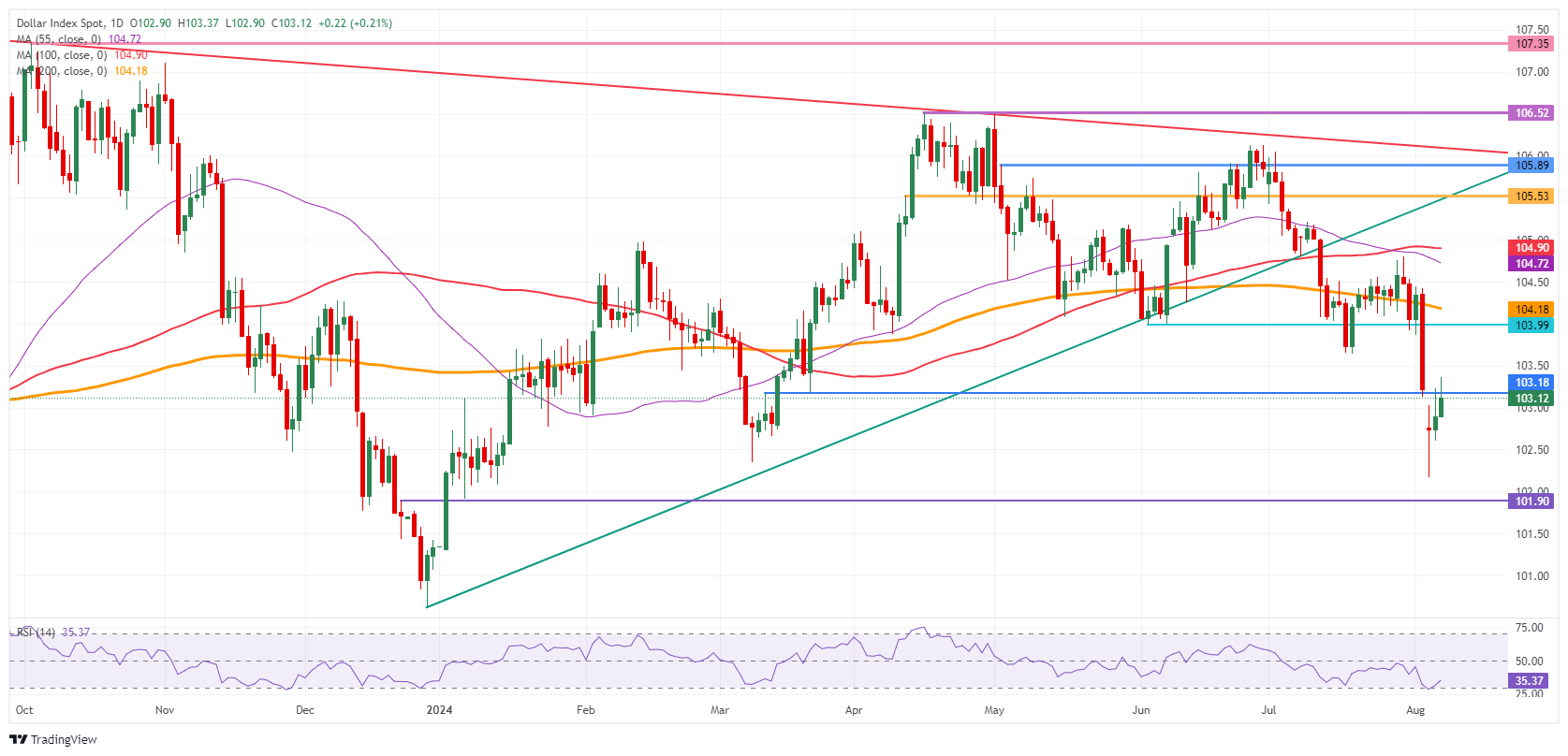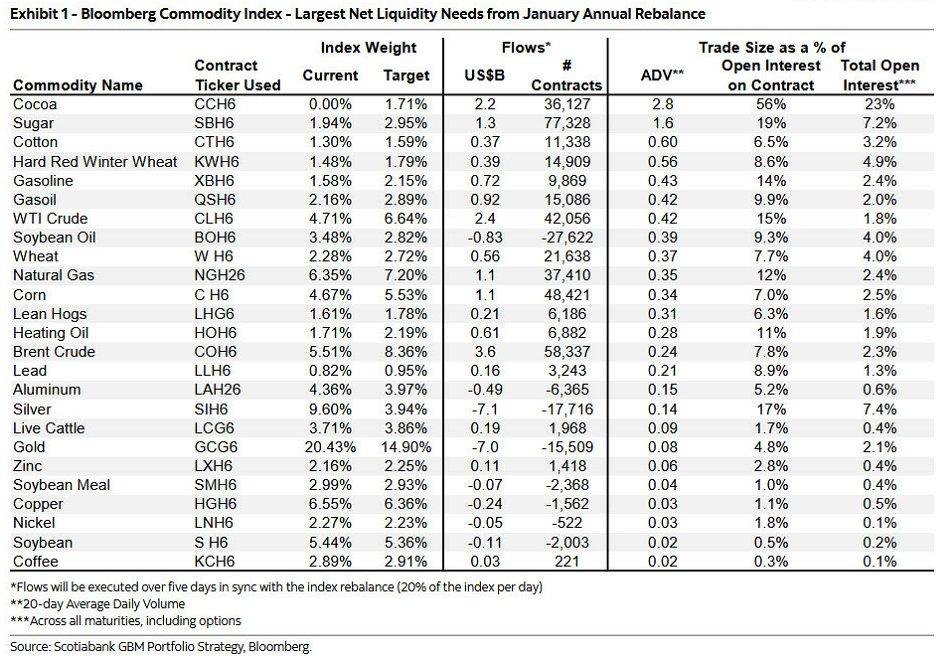- The US Dollar recovers for a second day in a row this week.
- The BoJ dropped mixed messages on its monetary policy.
- The US Dollar index pops above 103.00 and rallies higher on Wednesday.
The US Dollar (USD) recovers as all asset classes start to head back to more normal levels. Equities are behaving quite well and are stable, volatility is easing, and safe havens such as Japanese Yen (JPY) and Swiss Franc (CHF) are easing further against the Greenback. The Japanese Yen, sinking over 1.5% against the US Dollar, is the biggest contributor to the recovery of the US Dollar Index (DXY).
On the economic front, there is a very light day ahead, which should be beneficial for markets to continue the recovery path. In the interest rate space, the 10-year Note auction from the US treasury might draw the most attention, seeing it is a substantial benchmark rate. Late on Wednesday, the United States (US) Consumer Credit Change data for June will be released.
Daily digest market movers: All is quiet
- Traders must have raised their eyebrows in Asian hours when comments from Bank of Japan (BoJ) member Shinichi Uchida said that the BoJ would not raise rates if markets were unstable. This pushed the Yen down by 1% against the US Dollar in an initial reaction.
- At 11:00 GMT, the Mortgage Bankers Association has released its weekly Mortgage Application Index. The previous number was at -3.9%, with this week's number coming in positive at 6.9%
- Dr Olli Rehn, Governor of the Bank of Finland and member of the Governing Council of the European Central Bank, said that the ECB can continue its cutting cycle if and only when inflation is further slowing down.
- At 17:00 GMT, the US Treasury will allocate a 10-year Note in the market. Previous interest was 4.276%, while the US 10-year note currently trades around 3.90%, a substantial discount.
- US Consumer Credit Change data for June is set to be released at 19:00 GMT, with expectations for a drop to $10 billion from $11.35 billion a month earlier.
- Equity markets are on a winning streak, with both the Japanese Nikkei and Topix indexes in the green. European and US equities are all up over 1% on the day ahead of the US Opening Bell.
- The CME Fedwatch Tool shows a 63.5% chance of a 50 basis points (bps) interest rate cut by the Federal Reserve (Fed) in September. Another 25 bps cut is expected in November by 55.5%, while a 17.5% chance for a 50 bps cut and 27.0% for no cut are being pencilled in for that meeting.
- The US 10-year benchmark rate trades at 3.93%, shooting higher for this week, as investors flee away from bonds and back into equities.
US Dollar Index Technical Analysis: 104.00 comes back into play
The US Dollar Index (DXY) is continuing its recovery with some help from the Japanese Yen. TWhen looking at that specific currency cross (USD/JPY), it paints a clearly shows picture that the Yen has gained too much too quickly against the US Dollar. A full recline is not projected, though certainly more recovery could occur take place this week for the US Dollar, which would spill over into the DXY trading higher by Friday.
The three-tiered recovery is already in play, with the first resistance up at 103.18, a level held on Friday though snapped on Monday in the Asian hours, being tested on Wednesday. Once the DXY closes above that level, next up is 104.00, which was the support from June. If the DXY can make its way back above that level, the 200-day Simple Moving Average (SMA) at 104.22 is the next resistance level to look out for.
On the downside, the oversold Relative Strength Index (RSI) indicator in the daily chart should prevent the DXY from making more hefty losses. Support nearby is the March 8 low at 102.35. Once through there, pressure will start to build on 102.00 as a big psychological figure before testing 101.90, which was a pivotal level in December 2023 and January 2024.
US Dollar Index: Daily Chart
Risk sentiment FAQs
In the world of financial jargon the two widely used terms “risk-on” and “risk off'' refer to the level of risk that investors are willing to stomach during the period referenced. In a “risk-on” market, investors are optimistic about the future and more willing to buy risky assets. In a “risk-off” market investors start to ‘play it safe’ because they are worried about the future, and therefore buy less risky assets that are more certain of bringing a return, even if it is relatively modest.
Typically, during periods of “risk-on”, stock markets will rise, most commodities – except Gold – will also gain in value, since they benefit from a positive growth outlook. The currencies of nations that are heavy commodity exporters strengthen because of increased demand, and Cryptocurrencies rise. In a “risk-off” market, Bonds go up – especially major government Bonds – Gold shines, and safe-haven currencies such as the Japanese Yen, Swiss Franc and US Dollar all benefit.
The Australian Dollar (AUD), the Canadian Dollar (CAD), the New Zealand Dollar (NZD) and minor FX like the Ruble (RUB) and the South African Rand (ZAR), all tend to rise in markets that are “risk-on”. This is because the economies of these currencies are heavily reliant on commodity exports for growth, and commodities tend to rise in price during risk-on periods. This is because investors foresee greater demand for raw materials in the future due to heightened economic activity.
The major currencies that tend to rise during periods of “risk-off” are the US Dollar (USD), the Japanese Yen (JPY) and the Swiss Franc (CHF). The US Dollar, because it is the world’s reserve currency, and because in times of crisis investors buy US government debt, which is seen as safe because the largest economy in the world is unlikely to default. The Yen, from increased demand for Japanese government bonds, because a high proportion are held by domestic investors who are unlikely to dump them – even in a crisis. The Swiss Franc, because strict Swiss banking laws offer investors enhanced capital protection.
Tags: Featured,newsletter





























